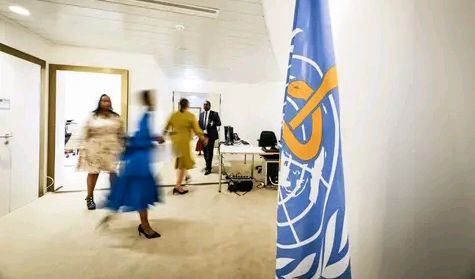By Blessing Chinagorom
The World Health Organization has revealed that governments, donors, major multilateral institutions and others reaffirmed important new political, programmatic and the financial commitments, which includes nearly US$600 million in new funds, to eliminate the cervical cancer.
In a statement released by the World Body on Tuesday stated that these commitments were made at the first Global Forum to Eliminate Cervical Cancer: Advancing the Call to Action, in Cartagena de Indias, Colombia, to promote national and global momentum to end this preventable disease.
WHO said, “Every two minutes, a woman dies from cervical cancer, despite the knowledge and tools to prevent, eliminate this disease. Vaccination against human papillomavirus (HPV), the main cause of cervical cancer, can prevent the vast majority of cases and, combined with screening and treatment, offers a route to its elimination.
It added that cervical cancer is the fourth most common cancer in women worldwide, and continues to disproportionately affect women and their families in low- and middle-income countries (LMICs) worldwide.
In an important turn, the World Health Organization (WHO) recommendation issued in 2022 in favor of a single-dose HPV vaccine schedule significantly reduced obstacles to expanding vaccination programs.
This was followed by a similar recommendation in the Region of the Americas in 2023. The WHO Regional Office for Africa just followed suit with its own recommendation for countries in the Region to adopt the single-dose scheme. To date, 37 countries reported switching or intending to switch to a single-dose schedule.
It further stated that the commitments announced at the forum mark a watershed moment to accelerate progress on a promise made in 2020, when 194 countries adopted WHO’s global strategy to eliminate cervical cancer.
Reacting to this development, WHO Director- General, Dr Tedro Ghebreyesus said, “We have the knowledge and the tools to make cervical cancer history, but vaccination, screening and treatment programs are still not reaching the scale required”.
He added, “This first global forum is an important opportunity for governments and partners to invest in the global elimination strategy and address the inequalities that deny women and girls access to the tools they need to save their lives.”
In addition to a renewal of Indonesia’s commitment in its National Action Plan in 2023, other political and programmatic commitments are:
The Democratic Republic of the Congo is committed to starting to introduce the HPV vaccine as soon as possible using the one-dose schedule recommended by WHO.
It is also committed to doing everything possible to achieve, as soon as possible, the goal of immunization coverage for girls aged 9 to 14 years of the cervical cancer elimination strategy.
Ethiopia is committed to implementing a robust vaccine distribution strategy across the country, with the goal of achieving at least 95% coverage by 2024 for all 14-year-old girls, regardless of their socioeconomic status and whether they are in school or No.
The country also commits to screening one million women who meet the criteria for cervical cancer each year, and to treating 90% of those with precancerous lesions.
In addition, it has been approved to introduce the one-dose HPV vaccine scheme this year and expand it as part of the country’s Expanded Immunization Program plans.
Nigeria launched the national HPV vaccination program this year, adopting the single-dose schedule for girls aged 9 to 14 years, and is now committed to achieving at least 80% vaccination coverage in girls.
They are committed to continuing to increase HPV vaccine coverage through a robust delivery strategy that will reach girls where they are.
In the case of girls in school, they will focus on distribution in schools; In the case of out-of-school girls, they commit to carrying out outreach activities at key times of the year, with goal of reaching at least 80% coverage of the target girls by 2026.
While disclosed that the nearly $600 million in new funding includes $180 million from Bill Gates Foundation, $10 million from UNICEF and $400 million from the World Bank.
WHO said further that there are many challenges on the path to elimination. “Due to supply limitations, distribution problems and the COVID-19 pandemic, only one in five adolescents was vaccinated in 2022.
“And although there are cost-effective and evidence-based tools for screening and treatment, less than 5% of women in many low- and middle-income countries have ever been screened for cervical cancer.
“Limitations of health systems, costs, logistical problems and lack of political will are obstacles to the implementation of cervical cancer prevention and treatment programs.
Revealed that these obstacles have led to deep inequity: of the estimated 348,000 cervical cancer deaths in 2022, more than 90% occurred in low- and middle-income countries.
If governments and partners firmly recommit to the global agenda, it is possible to reverse trend and prevent annual deaths from increasing to 410,000 by 2030, as currently estimated.
This historic forum is co-organized by the Governments of Colombia and Spain, in collaboration with the Pan American Health Organization.
Also, the World Health Organization; UNICEF; the Bill and Melinda Gates Foundation; Unitaid; the Global Financing Facility; Gavi, the Vaccine Alliance; the United States Agency for International Development; and the World Bank.
Nearly $600m committed in funds, to tackle cervical cancer
Please login to join discussion











